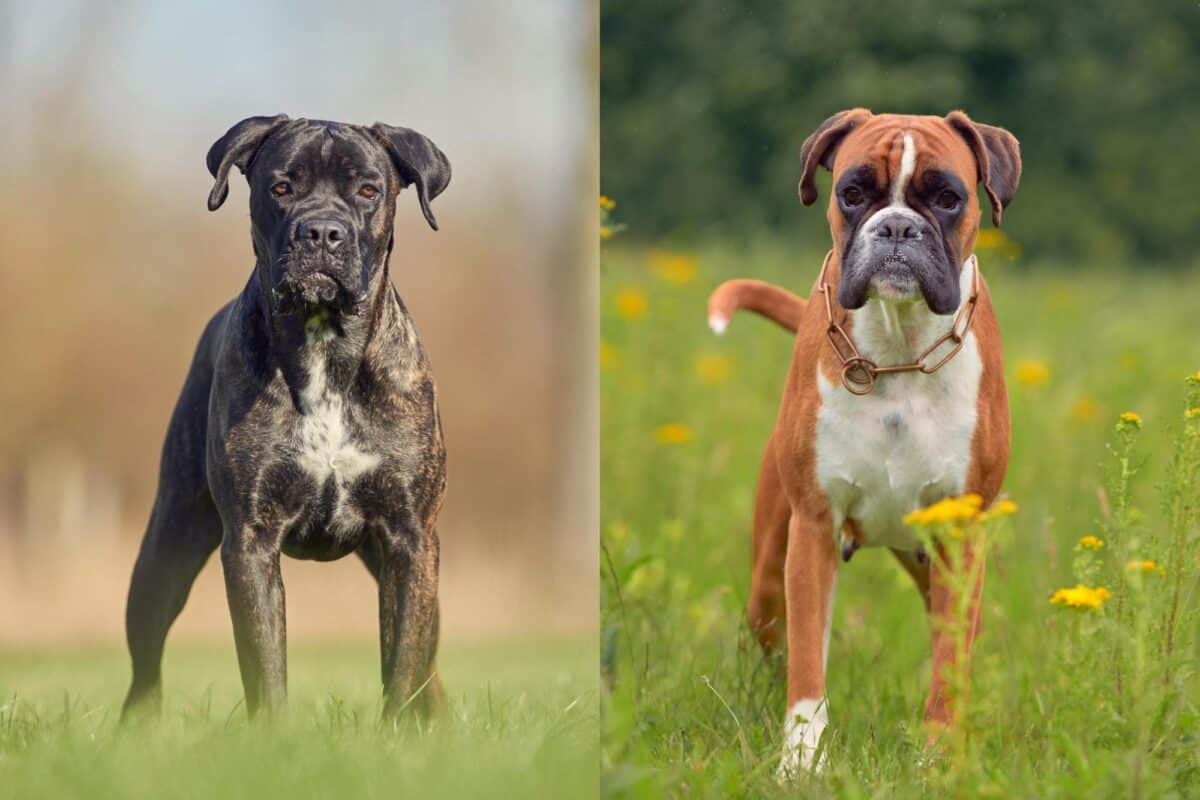
The Boxer-Cane Corso mix, also known as the Cane Corxer, represents a powerful and unique hybrid combining two distinguished working breeds. This designer crossbreed emerged in the 1990s, inheriting the Boxer's playful energy and the Cane Corso's protective instincts. These large, muscular dogs typically weigh between 65-110 pounds and stand 23-28 inches tall. While they make loyal family companions and excellent guard dogs, they require experienced owners who can provide proper training, socialization, and exercise. Their growing popularity stems from their blend of intimidating appearance and affectionate nature, though potential owners should carefully consider their substantial exercise needs and strong-willed temperament.
Exercise and Training Needs of Boxer Cane Corso Mix
Energy Level and Exercise Requirements
The Boxer Cane Corso mix has exceptionally high energy levels that require dedicated daily exercise regimens. These dogs need structured physical activity beyond just playing in the yard. A minimum of 1.5-2 hours of focused exercise per day is essential, which should include:
- Long walks or jogs (45-60 minutes per session)
- Interactive play sessions like fetch or frisbee
- Mental stimulation through agility training
- Multiple exercise sessions spread throughout the day
Without adequate exercise, these dogs can develop destructive behaviors due to pent-up energy. Their high activity needs make them unsuitable for apartment living unless owners can commit to extensive daily outdoor exercise.
Training Approach and Socialization
Early and consistent training is crucial for this mix due to their strong-willed nature. The training approach should focus on:
- Positive reinforcement methods only - harsh training is ineffective
- Short, focused training sessions to maintain attention
- Early socialization with people and controlled exposure to other animals
- Establishing clear leadership through consistent rules
- Regular obedience practice even after basic training
The breed requires an experienced owner who understands large, dominant breeds. Their intelligence makes them quick learners, but their independent streak means they may challenge authority without proper training foundations. Socialization must begin in puppyhood to prevent territorial aggression from developing.
Understanding the Boxer and Cane Corso Mix Breed Care Requirements and Health Considerations
Diet and Grooming Essentials
The Cane Corxer requires 3-4 cups of high-quality dry food daily, divided into 2-3 meals. Their diet should prioritize:
- High protein content with meat as the first ingredient
- Minimal artificial fillers and preservatives
- Fish oil supplements for joint health
- Appropriate portions to prevent obesity
Grooming needs are relatively minimal due to their short, dense coat. The maintenance routine includes:
- Weekly brushing with a wire brush
- Bathing every 1-2 months to preserve natural skin oils
- Regular nail trimming and dental care
- Ear cleaning to prevent infections
Critical Health Considerations
While previous sections covered exercise-related health aspects, this section focuses specifically on genetic health concerns. The Boxer Cane Corso mix is prone to several hereditary conditions:
Serious conditions to monitor:
- Cardiomyopathy and congenital heart defects
- Hip and elbow dysplasia
- Mitral valve disease
- Deep chest-related bloat risk
Minor but important conditions:
- Progressive retinal atrophy
- Various eye diseases requiring regular checkups
- Joint issues requiring early preventive care
Regular veterinary screening is essential for early detection and management of these conditions. Owners should:
- Schedule routine heart examinations
- Monitor joint health, especially during growth
- Conduct regular eye examinations
- Watch for signs of respiratory distress
Physical Characteristics and Breeding Background of Boxer Cane Corso Mix
Distinctive Physical Traits
The Cane Corxer inherits a muscular, powerful build from both parent breeds, with typical measurements including:
- Height: 23-28 inches at shoulder
- Weight: 65-110 pounds
- Dense, short coat in colors like:
- Black
- Brindle
- Fawn
- Red
- Grey with white markings
Notable physical features include:
- Strong, broad head with alert expression
- Dark eyes (round or almond shaped)
- Compact, well-arched feet
- Muscular neck and shoulders
Breeding History and Development
While the Cane Corxer hybrid emerged in the 1990s, the parent breeds have rich histories:
The Cane Corso:
- Ancient Italian breed from 5th century
- Nearly went extinct in 1960s
- Revived through dedicated breeding programs
- Originally used for hunting large game and guarding
The Boxer:
- Developed in 1800s Germany
- Used historically for:
- Bear and boar hunting
- Military/police work
- Guard duties
This mixed breed combines the Boxer's athleticism with the Cane Corso's protective instincts, though individual dogs may favor traits from either parent. Recognized by the American Canine Hybrid Club and Designer Breed Registry.
Conclusion
The Boxer Cane Corso mix (Cane Corxer) is a powerful and energetic hybrid breed that requires an experienced, dedicated owner. This mix combines the athleticism of the Boxer with the protective nature of the Cane Corso, resulting in a dog that needs extensive daily exercise (1.5-2 hours minimum), consistent training, and early socialization. Their physical characteristics include a muscular build weighing 65-110 pounds with a short, dense coat requiring minimal grooming.
The research highlights several critical considerations for potential owners. First, these dogs are not suitable for apartment living due to their high exercise requirements. Second, they require an experienced handler who can provide firm but positive leadership and training. Third, they are prone to several serious health conditions including heart problems and hip dysplasia that require vigilant monitoring. For success with this breed, owners must be prepared to invest significant time in exercise, training, and preventive healthcare while providing a structured environment with clear boundaries.